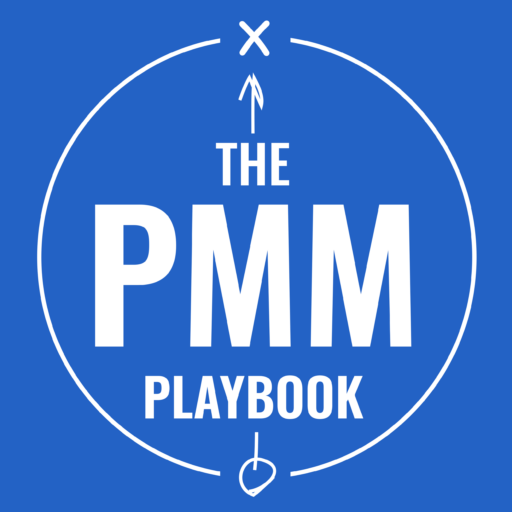In sports, it’s well-understood that no single player can clinch a victory alone. Even legends like Michael Jordan and Tom Brady, despite their unparalleled skills, depended on their teams to win championships. Jordan had stalwarts like Scottie Pippen, Dennis Rodman, and Steve Kerr to secure his six NBA titles. Similarly, Tom Brady’s Super Bowl victories were not solo feats; he needed the crucial support of teammates like Rob Gronkowski, Rodney Harrison, and Julian Edelman. This team-centric nature of sports is why I find it a fitting metaphor for a product launch and go-to-market (GTM) strategy.
Like in sports, a GTM launch is a team effort where each member plays a critical role, and the collective effort determines the product’s success in the market. No product can triumph without a coordinated team approach, mirroring how no sports team can win without teamwork and strategic planning.
I see the Product Marketing Manager (PMM) as the quarterback of this cross-functional GTM team. Their goal isn’t just to score touchdowns but also to orchestrate the play by coordinating team members, ensuring everyone is in the right position to execute the strategy effectively. This analogy extends further because, much like a quarterback who must know their plays inside and out, including the roles of each team member within those plays, a PMM needs a deep understanding of both the strategy and the capabilities of their team to lead them to success.
We’ve discussed some of the key roles that a PMM plays, now, to ensure you’re utilizing the full extent of your team, let’s take a look at your cross-functional go-to-market team and some of their key roles and responsibilities within your product’s GTM strategy.
Product Management
- Function: Guides the development of the product by aligning market needs with business objectives, setting the vision and strategy, and prioritizing features that meet customer demands, ensuring the product fits within the overall market landscape.
- Role & Responsibilities:
- Define product vision and strategy.
- Manage the roadmap and prioritize features.
- Coordinate with engineering to guide product development.
- Ensure the product meets market needs and customer expectations.
Sales
- Function: Drives revenue by understanding customer needs, communicating product value effectively, and closing deals. The sales team also provides feedback from the market to refine product positioning and GTM strategies.
- Role & Responsibilities:
- Collaborate with PMM to understand the product messaging and value proposition.
- Identify and target potential customers.
- Provide feedback from customers to product teams.
- Develop and execute sales strategies to achieve sales targets.
Marketing
- Function: Creates awareness and demand for the product through strategic messaging and campaigns, targeting the right audiences with the right messages at the right time. Marketing also works to position the product effectively against competitors and within the market.
- Role & Responsibilities:
- Develop and implement marketing campaigns across various channels.
- Manage public relations and promotional events.
- Coordinate content creation for blogs, case studies, and social media.
- Track marketing campaign performance and adjust strategies as needed.
Customer Success and Support
- Function: Ensures customers achieve their desired outcomes while using the product, which helps reduce churn and increase customer satisfaction and loyalty. This team also gathers insights on product usage and customer feedback to inform ongoing product improvements.
- Role & Responsibilities:
- Provide onboarding and ongoing support to customers.
- Develop training materials and conduct webinars or live sessions.
- Collect customer feedback to improve product and customer experience.
- Manage customer concerns and troubleshooting post-launch.
Finance
- Function: Manages budgeting, pricing, and forecasting for the product, ensuring that the GTM strategy is financially viable and aligned with the company’s financial goals. Finance also provides insights into investment allocation and potential ROI from the GTM activities.
- Role & Responsibilities:
- Develop pricing strategies and models.
- Ensure alignment of GTM strategies with financial projections and goals.
- Manage budgets for marketing and other GTM activities.
- Provide financial insights and analysis to support strategic decisions.
Legal and Compliance
- Function: Ensures all aspects of the GTM strategy comply with relevant laws and regulations, reviews contracts, and protects intellectual property, mitigating legal risks related to the launch and ongoing sales processes.
- Role & Responsibilities:
- Review and approve all marketing materials and product labels for legal compliance.
- Handle patents, trademarks, and intellectual property issues.
- Ensure compliance with global, regional, and local laws and regulations.
- Advise on contractual agreements with partners and vendors.
Operations
- Function: Supports the GTM strategy by managing the logistics of product delivery and maintaining the supply chain. This team ensures that operational capabilities match the scale demanded by the GTM strategy to meet customer expectations.
- Role & Responsibilities:
- Coordinate with manufacturers and suppliers to ensure timely product availability.
- Manage inventory levels and distribution channels.
- Oversee order fulfillment and logistics.
- Ensure operational efficiency and cost-effectiveness.
Information Technology (IT)
- Function: Provides the necessary technological infrastructure to support the GTM strategy. IT ensures that all systems, from CRM to data analytics and customer support software, are optimized to handle the demands of the product launch and ongoing maintenance.
- Role & Responsibilities:
- Provide systems for managing customer relationships and data (e.g., CRM software).
- Support data analysis and reporting needs.
- Ensure cybersecurity and data protection.
- Manage technical aspects of online product platforms and sales tools.
The effectiveness of a GTM strategy largely depends on the seamless integration and cooperation of these cross-functional teams. Each department brings its expertise to the table, helping to ensure the product not only launches successfully but also continues to grow and meet market demands.

